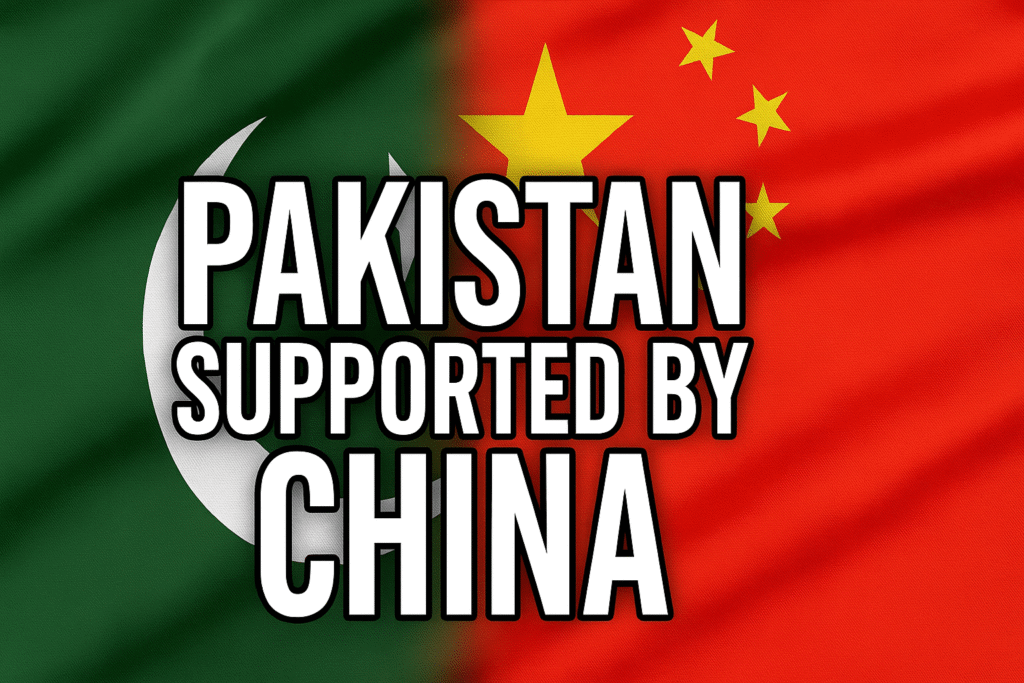
Introduction: The Unspoken Player in India vs Pakistan Tensions
Whenever the phrase India vs Pakistan dominates the headlines, there’s often an unspoken third player working quietly but powerfully in the background: China. From strategic military ties to colossal economic ventures, the China-Pakistan relationship is one of the most significant factors shaping the modern India versus Pakistan dynamic.
As tensions in India vs Pakistan today continue to simmer—both along borders and in diplomatic arenas—understanding China’s stake in Pakistan is essential to decoding the broader geopolitical chessboard. This article explores why China has aligned so strongly with Pakistan and how deeply it’s invested—politically, militarily, and economically.
Historical Foundations of China-Pakistan Ties
1. A Strategic Partnership Rooted in Geography
Pakistan’s geographic location is crucial to China’s regional ambitions. It borders China’s western region of Xinjiang and offers direct access to the Arabian Sea—vital for China’s energy and trade routes. In contrast to its often tense relationship with India, China views Pakistan as a consistent and cooperative partner.
- Sino-Pakistan Boundary Agreement (1963): One of the earliest signs of their closeness was the agreement to settle the border issue in the disputed Kashmir region—something India has never recognized.
- Military Collaboration: Over the decades, China has helped Pakistan develop ballistic missile systems, submarines, and fighter jets. The jointly produced JF-17 Thunder aircraft is a hallmark of their defense cooperation.
China’s Economic Footprint in Pakistan: The CPEC Factor
The single most transformative project in China-Pakistan relations is the China-Pakistan Economic Corridor (CPEC), a flagship component of China’s global Belt and Road Initiative (BRI).
Key Details of CPEC:
| Project | Description | Estimated Investment |
|---|---|---|
| CPEC | A network of roads, railways, and pipelines connecting China to the Arabian Sea via Pakistan | Over $62 billion |
| Gwadar Port | Strategic port leased to China for 40 years | Estimated $1.6 billion in direct development |
| Power Projects | Coal, solar, and hydro projects to address Pakistan’s energy deficit | Approx. $35 billion |
China’s investment through CPEC aims to strengthen Pakistan’s infrastructure while securing a faster route for its exports and energy imports. But critics argue that it also binds Pakistan into a long-term financial dependence on Beijing.
Military and Nuclear Cooperation: A Quiet Alliance
While most headlines focus on the India vs Pakistan military conflict, China’s role in strengthening Pakistan’s military capabilities is substantial but understated.
- Nuclear Development: China has provided material and technological support for Pakistan’s civilian nuclear energy program. While officially limited to peaceful use, this cooperation has also bolstered Pakistan’s overall strategic capabilities.
- Arms Trade: China is Pakistan’s largest arms supplier. Drones, tanks, and missile systems from China form the backbone of Pakistan’s defense apparatus.
This military partnership is more than transactional. It represents a strategic effort to maintain a counterbalance against India, especially as India strengthens ties with the United States and other Western powers.
Why China Needs Pakistan: More Than Just Friendship
1. Counterbalance to India
India’s growing regional influence—military modernization, strategic ports, and the QUAD alliance (with the U.S., Japan, and Australia)—poses a challenge to China’s regional dominance. A strong Pakistan keeps India’s focus split.
2. Security Buffer for Xinjiang
Pakistan’s cooperation helps China maintain stability in its Muslim-majority Xinjiang region by curbing potential cross-border influences and managing extremist networks.
3. Access to the Arabian Sea
Through the development of Gwadar Port, China bypasses the Malacca Strait—a strategic chokepoint vulnerable to blockades or U.S. naval dominance—gaining a more secure and faster route for trade and oil shipments.
How India Views This Alliance
From New Delhi’s standpoint, the China-Pakistan axis is deeply concerning. It adds a new layer of complexity to the India vs Pakistan today narrative and transforms what has historically been a bilateral issue into a regional standoff with global implications.
Key Indian Concerns:
- CPEC Runs Through Disputed Territory: The corridor passes through Gilgit-Baltistan, a region India claims as its own. This is seen as a direct challenge to India’s sovereignty.
- Encirclement Strategy: India accuses China of using Pakistan to encircle India—through both economic corridors and military alliances.
- Arms Race: China’s consistent supply of advanced weapons to Pakistan has pushed India to boost its own military spending, creating a regional arms race.
China, Pakistan, and the Media Narrative
The China-Pakistan partnership often unfolds behind the scenes. While India Pakistan live coverage on TV and digital platforms mostly focuses on border tensions, surgical strikes, and ceasefire violations, China’s silent but strategic presence remains less visible but far more influential.
Interestingly, both Pakistan and China manage media narratives carefully. Chinese investments are portrayed as mutually beneficial, while any suggestion of debt-trap diplomacy is dismissed. However, watchdogs and financial analysts have warned about Pakistan’s rising debt burden due to CPEC-related loans and guarantees.
Current Numbers: What’s the Real Investment?
As of late 2024, Chinese commitments to Pakistan stand at around $62 billion, but actual disbursement has been slower than expected. Here’s a breakdown:
| Sector | Projected Investment | Actual Disbursement (est.) |
|---|---|---|
| Energy | $35 billion | $20 billion |
| Infrastructure | $15 billion | $9 billion |
| Gwadar Development | $1.6 billion | $800 million |
| Total | $62 billion | Approx. $30 billion |
Despite delays and rising skepticism within Pakistan over the terms of Chinese loans, the economic and strategic partnership continues to deepen.
Conclusion: A Partnership That Redefines India vs Pakistan
The China-Pakistan alliance is not merely a tactical friendship—it’s a strategic coalition reshaping the regional balance of power. It influences everything from border policy and military capability to trade corridors and energy security. For India, it means engaging on two fronts: managing direct tensions with Pakistan while also strategically countering China’s growing influence.
As the India versus Pakistan story evolves, China will remain a powerful but often understated factor. And in the broader India vs Pakistan today scenario, understanding this triangle is crucial to decoding South Asia’s future.
